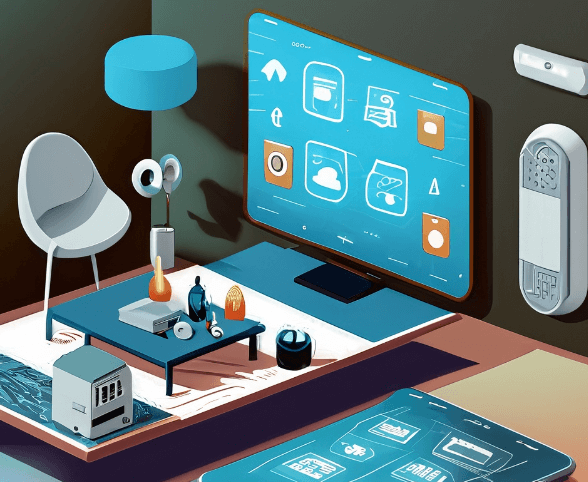What technological innovations are driving the future of smart homes and connected devices?

Introduction:
The concept of smart homes has evolved rapidly, moving from a futuristic idea to a tangible reality that continues to expand and innovate. This transformation is driven by a series of technological advancements that enhance the convenience, security, and efficiency of our living spaces. From advanced sensors to AI-driven automation, the future of smart homes is being shaped by remarkable innovations that promise to make our lives easier and more interconnected. In this article, we will delve into the key technologies propelling this evolution and how they are set to revolutionize our homes.
Artificial Intelligence and Machine Learning in Smart Homes
Artificial intelligence (AI) and machine learning (ML) are at the forefront of smart home technology. These systems enable devices to learn from user behaviors and preferences, allowing for more personalized and efficient home automation. For example, AI-driven thermostats can adjust temperatures based on past usage patterns and real-time weather forecasts, ensuring optimal comfort and energy efficiency. Additionally, AI-powered virtual assistants like Amazon Alexa and Google Assistant can control various home devices, providing a seamless and integrated user experience.
The Role of IoT in Connected Devices
The Internet of Things (IoT) is the backbone of smart home connectivity. IoT technology allows various devices to communicate and interact with each other, creating a cohesive network of smart devices. This includes everything from smart refrigerators that can order groceries online to security systems that can be monitored remotely. The interconnected nature of IoT devices enhances the overall functionality and convenience of smart homes, making it easier for homeowners to manage their living spaces efficiently.
Advancements in Home Automation Systems
Home automation systems have come a long way, with innovations that simplify the management of household tasks. Modern automation platforms can integrate lighting, heating, cooling, and entertainment systems into a single interface, often accessible via smartphones or tablets. These systems can be programmed to perform specific tasks at designated times, such as turning off lights when no one is in the room or starting the coffee maker in the morning. The ability to automate routine tasks not only saves time but also reduces energy consumption and enhances security.
Smart Home Security Innovations
Security is a critical aspect of smart home technology, with continuous advancements ensuring greater protection for homeowners. Smart locks, surveillance cameras, and motion sensors are becoming more sophisticated, offering features like facial recognition, real-time alerts, and remote access control. These innovations provide homeowners with peace of mind, knowing that their properties are secure and that they can monitor their homes from anywhere in the world.
Energy Efficiency and Sustainability in Smart Homes
Energy efficiency and sustainability are key considerations in the development of smart home technologies. Innovations such as smart thermostats, energy-efficient lighting, and solar panels are helping homeowners reduce their carbon footprints and lower utility bills. Smart home systems can monitor energy usage and suggest ways to conserve energy, making homes more eco-friendly and cost-effective.
Voice Control and Natural Language Processing
Voice control has become a significant feature in smart homes, driven by advancements in natural language processing (NLP). Devices like Amazon Echo and Google Home use NLP to understand and respond to user commands, making it easier to control various home functions with simple voice commands. This technology not only enhances convenience but also makes smart homes more accessible to individuals with disabilities.
Integration of Augmented Reality (AR) and Virtual Reality (VR)
Augmented reality (AR) and virtual reality (VR) are finding their way into smart home technologies, offering innovative ways to interact with and manage home environments. AR can provide homeowners with visual overlays of information, such as maintenance instructions or design ideas, directly on their smartphones or smart glasses. VR can simulate different home setups, allowing users to experiment with interior design changes before making actual modifications.
Wireless Charging Technologies
Wireless charging is revolutionizing the way we power our smart devices. This technology allows devices to be charged without the need for physical cables, reducing clutter and enhancing convenience. Wireless charging pads and stations can be integrated into furniture, countertops, and other surfaces, making it easier to keep devices powered throughout the home.
Smart Appliances and Kitchen Innovations
The kitchen is one area where smart technology is making significant strides. Smart refrigerators, ovens, and dishwashers are equipped with features that streamline cooking and cleaning processes. For instance, smart ovens can be preheated remotely, and refrigerators can alert users when they are running low on certain items. These innovations not only save time but also enhance the overall cooking experience.
Health and Wellness Technologies
Health and wellness are becoming integral components of smart homes. Technologies such as smart mirrors, fitness trackers, and air quality monitors help homeowners maintain healthier lifestyles. Smart mirrors can provide real-time health metrics and fitness tracking, while air quality monitors ensure that the indoor environment is safe and comfortable.

The Impact of 5G on Smart Home Connectivity
The rollout of 5G technology is set to have a profound impact on smart home connectivity. With faster and more reliable internet speeds, 5G will enable seamless communication between devices, reducing latency and improving the overall performance of smart home systems. This enhanced connectivity will support more complex and data-intensive applications, further expanding the capabilities of smart homes.
Blockchain Technology for Enhanced Security
Blockchain technology is being explored as a means to enhance security in smart homes. By providing a decentralized and immutable ledger, blockchain can protect data and ensure the integrity of transactions between connected devices. This technology can prevent unauthorized access and ensure that only trusted devices and users can interact with the smart home network.
Biometric Authentication in Smart Homes
Biometric authentication is becoming increasingly popular in smart home security systems. Technologies such as fingerprint scanners, facial recognition, and voice recognition provide secure and convenient access control. These systems can be used to unlock doors, access personal devices, and authenticate transactions, offering a higher level of security than traditional passwords or keys.
Environmental Sensors and Monitoring Systems
Environmental sensors play a crucial role in maintaining the safety and comfort of smart homes. These sensors can monitor various factors such as temperature, humidity, air quality, and water levels. By providing real-time data and alerts, environmental monitoring systems help homeowners prevent issues like mold growth, water damage, and poor air quality, ensuring a healthier living environment.
Smart Lighting Systems
Smart lighting systems offer a range of features that enhance convenience and energy efficiency. These systems can be controlled remotely, programmed to follow schedules, and even adjust automatically based on occupancy and natural light levels. Smart bulbs and switches can also change colors and brightness to create different moods and atmospheres, adding a dynamic element to home lighting.
Innovations in Home Entertainment
Home entertainment systems are being transformed by smart technology. Smart TVs, sound systems, and streaming devices offer personalized and integrated entertainment experiences. Users can control their entire home entertainment setup with a single remote or voice command, access a wide range of content, and enjoy high-quality audio and video.
Predictive Maintenance and Smart Home Diagnostics
Predictive maintenance technology uses data and analytics to anticipate and address potential issues in smart home systems before they become major problems. This proactive approach can prevent costly repairs and extend the lifespan of devices and appliances. Smart home diagnostics can alert homeowners to issues such as failing HVAC systems, plumbing leaks, or electrical faults, allowing for timely intervention.
Innovations in Smart Home Furniture
Smart home furniture is designed to integrate technology seamlessly into living spaces. This includes furniture with built-in wireless charging, adjustable settings, and embedded speakers. Smart beds can monitor sleep patterns and adjust firmness for optimal comfort, while smart desks can adjust height and lighting to improve productivity and ergonomics.
Enhanced Connectivity with Mesh Networks
Mesh networks offer a solution to connectivity issues in larger homes by providing consistent and reliable Wi-Fi coverage throughout the property. These networks use multiple nodes to create a single, robust network, eliminating dead zones and ensuring that all smart devices remain connected. Mesh networks are easy to set up and can be expanded as needed, making them ideal for smart homes.
Personalized User Experiences with Context-Aware Systems
Context-aware systems use data from various sensors and devices to provide personalized user experiences. These systems can adjust settings based on the time of day, location, and user preferences. For example, a context-aware system can automatically dim lights, lower blinds, and play relaxing music in the evening, creating a comfortable and relaxing environment.
Smart Windows and Climate Control
Smart windows and climate control systems are designed to optimize energy efficiency and comfort. Smart windows can adjust their opacity to control the amount of sunlight entering a room, reducing the need for artificial lighting and cooling. Climate control systems can monitor and adjust temperature and humidity levels in real-time, ensuring a comfortable indoor environment.
Integration of Robotics in Smart Homes
Robotic technology is making its way into smart homes, offering new levels of convenience and automation. Robotic vacuum cleaners, lawn mowers, and even kitchen assistants can perform tasks autonomously, saving time and effort. These robots are becoming more sophisticated, with the ability to navigate complex environments and learn from their interactions.
The Future of Smart Home Connectivity with Edge Computing
Edge computing is poised to revolutionize smart home connectivity by processing data closer to where it is generated, reducing latency and improving response times. This technology allows smart devices to function more efficiently and reliably, even in the absence of a constant internet connection. Edge computing can support more advanced applications, such as real-time video processing and complex AI algorithms.
Sustainable Building Materials and Smart Construction
The use of sustainable building materials and smart construction techniques is becoming more prevalent in the development of smart homes. These materials and methods are designed to reduce environmental impact, enhance energy efficiency, and improve the overall quality and durability of homes. Innovations such as 3D-printed homes, green roofs, and recycled materials are paving the way for more sustainable living spaces.
Smart Water Management Systems
Smart water management systems help homeowners monitor and control water usage, preventing waste and reducing costs. These systems can detect leaks, monitor water quality, and automate irrigation schedules based on weather conditions. By providing real-time data and alerts, smart water management systems ensure efficient and sustainable water use.
Innovations in Home Health Monitoring
Home health monitoring technologies are becoming an integral part of smart homes, offering solutions for managing chronic conditions, tracking fitness goals, and providing remote healthcare services. Devices such as smart scales, blood pressure monitors, and glucose meters can sync with health apps and provide insights into personal health trends. These innovations support proactive health management and improve the quality of life for individuals with health concerns.
Enhanced Home Networking Solutions
Enhanced home networking solutions are crucial for supporting the increasing number of connected devices in smart homes. Technologies such as Wi-Fi 6 and 5G offer faster speeds, greater capacity, and improved reliability, ensuring that all smart devices function seamlessly. Advanced networking solutions also provide better security, protecting smart home systems from cyber threats.
Conclusion
The future of smart homes and connected devices is being shaped by a multitude of technological innovations that enhance convenience, security, and sustainability. From AI and IoT to voice control and wireless charging, these advancements are transforming our living spaces into highly efficient and personalized environments. As technology continues to evolve, smart homes will become even more integrated, intuitive, and indispensable in our daily lives.
FAQs
What are some key benefits of AI in smart homes? AI in smart homes offers personalized automation, improved energy efficiency, and seamless integration of devices, enhancing overall convenience and user experience.
How does IoT contribute to smart home functionality? IoT enables various devices to communicate and interact, creating a cohesive network that enhances functionality, convenience, and efficiency in smart homes.
What role does 5G play in the future of smart homes? 5G technology provides faster and more reliable internet speeds, supporting seamless communication between devices and enabling more complex and data-intensive applications in smart homes.
How do smart home security systems improve safety? Smart home security systems offer advanced features like facial recognition, real-time alerts, and remote access control, providing greater protection and peace of mind for homeowners.
What innovations are making smart homes more energy-efficient? Innovations such as smart thermostats, energy-efficient lighting, and solar panels help reduce energy consumption and lower utility bills, making smart homes more sustainable.
How is voice control technology enhancing smart home experiences? Voice control technology, driven by advancements in natural language processing, allows users to control various home functions with simple voice commands, enhancing convenience and accessibility.






